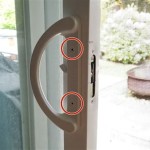DIY Cement Patio: A Comprehensive Guide to Pouring Your Own Outdoor Space
Creating a cement patio is a viable option for homeowners seeking to enhance their outdoor living space without incurring exorbitant contractor fees. This guide provides a detailed exposition of the process, from initial planning and site preparation to the final curing stages. A well-executed DIY cement patio project can significantly increase property appeal and provide a durable, low-maintenance area for relaxation and entertainment.
Before embarking on this endeavor, it is crucial to understand the required tools, materials, and, most importantly, the sequential steps involved. Careful planning and meticulous execution are critical for achieving a professional-looking and structurally sound cement patio. This article aims to equip individuals with the necessary knowledge to successfully undertake this project.
Planning and Preparation: Laying the Groundwork for Success
The initial phase of any DIY cement patio project is arguably the most important. This stage involves meticulous planning, accurate measurements, and thorough site preparation. Shortcuts or oversights during this phase can lead to significant problems later in the process, potentially compromising the structural integrity and aesthetic appeal of the finished patio. The following points detail the key aspects of planning and preparation.
1. Determine the Patio Size and Shape: Careful consideration should be given to the intended use of the patio. Will it primarily serve as a dining area, a lounging space, or a combination of both? The size and shape should be proportionate to the surrounding landscape and architecture. Using graph paper to sketch out different options can be helpful in visualizing the final product. Accurate measurements are essential, and any existing obstacles, such as trees or utility lines, should be factored into the design.
2. Obtain Necessary Permits: Before beginning any construction, it is imperative to check local building codes and regulations. Many municipalities require permits for concrete patios, especially if they exceed a certain size or proximity to property lines. Failure to obtain the necessary permits can result in fines or even the requirement to remove the structure. Contacting the local building department is the best way to determine the specific requirements for the project location.
3. Site Excavation and Grading: Once the design is finalized and permits are secured, the next step is to excavate the designated area. The depth of excavation will depend on the desired thickness of the concrete slab, as well as the thickness of the base material. A general rule of thumb is to excavate approximately 6-8 inches deep. The excavated area should be graded to ensure proper drainage away from the house. A slight slope of approximately 1/4 inch per foot is recommended. Using a level and a long, straight board will help in achieving an even and consistent grade.
4. Base Material Installation: After grading, a layer of compacted base material is essential for providing a stable and level foundation for the concrete slab. Crushed gravel or road base is typically used for this purpose. The base material should be spread evenly and compacted using a plate compactor. This process ensures that the base is dense and will not settle over time. A layer of geotextile fabric can be placed between the soil and the base material to prevent soil from migrating into the gravel and compromising its drainage capabilities. The base material should be approximately 4-6 inches thick.
5. Formwork Construction: The formwork defines the shape and dimensions of the patio and provides a mold for the concrete to be poured into. The formwork is typically constructed from lumber, such as 2x4s or 2x6s, depending on the desired thickness of the concrete slab. The lumber should be straight and free of warps or bends. The formwork should be securely staked in place using wooden or metal stakes. The stakes should be spaced closely enough to prevent the formwork from bowing or shifting during the concrete pour. Ensure that the formwork is level and aligned according to the design specifications. Using a level and measuring tape throughout this process is crucial for accurate results. Apply a release agent to the inside of the forms to prevent the concrete from sticking. This makes form removal easier after the concrete has cured.
Pouring and Finishing: The Art of Concrete Placement
The pouring and finishing phase is where the patio begins to take shape. This stage requires efficient teamwork, proper techniques, and attention to detail. Improper pouring or finishing can result in a weak or aesthetically unappealing patio. The following points detail the key aspects of pouring and finishing concrete.
1. Ordering Concrete and Delivery Considerations: Ordering the correct amount of concrete is crucial. Calculate the volume of concrete needed by multiplying the length, width, and thickness of the patio. It is always advisable to order slightly more concrete than calculated to account for variations in the excavation and potential waste. When ordering concrete, specify the desired strength (measured in pounds per square inch, or PSI) based on the intended use of the patio. A PSI of 3000-4000 is typically sufficient for residential patios. Schedule the concrete delivery carefully, considering the weather conditions and the availability of helpers. Ensure that the delivery truck has easy access to the pour site. Having a wheelbarrow readily available is essential for transporting concrete from the truck to the forms, especially if the truck cannot get close to the pour site.
2. Concrete Placement and Spreading: Begin pouring the concrete into the formwork, starting at one end and working systematically across the patio. Use shovels and rakes to distribute the concrete evenly within the forms. Avoid dumping large amounts of concrete in one spot, as this can create uneven settling and weak spots. Work quickly and efficiently to ensure that the concrete remains workable throughout the pouring process. Consolidate the concrete by repeatedly pushing a shovel into the poured concrete to remove air pockets.
3. Screeding and Leveling: Screeding is the process of leveling the concrete to the top of the formwork. Use a screed board, which is typically a long, straight 2x4, to drag across the surface of the concrete, removing excess material and filling in any low spots. Use a sawing motion to work the screed board across the concrete, ensuring that it is in contact with the top of the formwork. After screeding, use a bull float to further smooth the surface of the concrete and remove any remaining imperfections. The bull float should be used in a smooth, overlapping motion. The objective of the initial floating is to embed the large aggregate just below the surface to open the surface for bleed water.
4. Edging and Jointing: Edging is the process of rounding the edges of the concrete slab to prevent chipping and provide a more finished look. Use an edging tool to run along the perimeter of the patio, pressing down and smoothing the edges. Jointing is the process of creating control joints in the concrete slab to control cracking. Control joints are shallow grooves that are cut into the concrete to create weak points where cracking is more likely to occur. These grooves should be spaced approximately every 8-10 feet and should be at least one-quarter of the slab thickness. Control joints can be created using a grooving tool or a saw. The joints minimize random cracking and focus the cracking along these defined lines.
5. Final Finishing and Texturing: The final finishing of the concrete surface determines its texture and appearance. There are several different finishing techniques that can be used, depending on the desired look. A broom finish is a common and simple technique that involves dragging a broom across the surface of the concrete to create a textured surface that provides good traction. A float finish is a smoother finish that is achieved by using a hand float to rub the surface of the concrete. A trowel finish is the smoothest finish and is achieved by using a trowel to polish the surface of the concrete. Apply the texture using consistent, overlapping strokes.
Curing and Sealing: Protecting Your Investment
Curing and sealing are often overlooked but are crucial steps in ensuring the long-term durability and appearance of the cement patio. Proper curing allows the concrete to fully hydrate and gain strength. Sealing protects the concrete from staining, water damage, and the effects of freeze-thaw cycles. The following points detail the key aspects of curing and sealing.
1. Curing Methods: Curing involves keeping the concrete moist for a period of at least 7 days. This allows the concrete to hydrate properly and develop its full strength. There are several different curing methods that can be used. One common method is to keep the concrete covered with wet burlap or blankets. The burlap or blankets should be kept constantly moist. Another method is to use a curing compound, which is a liquid that is sprayed onto the surface of the concrete to seal in moisture. Follow the manufacturer's instructions when applying curing compound. The most fundamental practice is to simply wet the concrete multiple times a day for the first week after the pour. The frequency should be more often during the hotter days. Avoid puddles forming for an extensive time.
2. Formwork Removal: After the concrete has cured for at least 24-48hours, the formwork can be removed. Use a pry bar or hammer to gently remove the stakes and lumber. Be careful not to damage the edges of the concrete slab. Once the formwork is removed, inspect the concrete for any cracks or imperfections. A wet saw might be necessary to correct any issues with the edges.
3. Cleaning and Preparation for Sealing: Before sealing the concrete, it is important to clean the surface thoroughly. Remove any dirt, debris, or stains. A power washer with a mild detergent can be used to clean the concrete. Rinse the concrete thoroughly with clean water. Allow the concrete to dry completely before applying the sealer.
4. Sealing the Concrete: Sealing the concrete protects it from stains, water damage, and the effects of freeze-thaw cycles. There are several different types of concrete sealers available, including acrylic sealers, epoxy sealers, and polyurethane sealers. Choose a sealer that is appropriate for the intended use of the patio and the climate. Apply the sealer according to the manufacturer's instructions. Typically, two coats of sealer are recommended. Apply the sealer in thin, even coats. Allow the sealer to dry completely between coats.
By following these guidelines, individuals can successfully pour a durable and aesthetically pleasing cement patio, enhancing their outdoor living space and increasing their property value. Success involves patience, attention to detail, and adherence to established best practices for concrete work.

How To Plan Pour Your Diy Concrete Patio Liberty Ready Mix

Pouring Concrete Patio What Could Go Wrong With Doing It Yourself

Diy Concrete Patio In 8 Easy Steps How To Pour A Cement Slab

Diy Concrete Patio How To Pour Your Own Slab Bn S

Diy Concrete Patio How To Pour A Slab Bob Vila

How To Pour Concrete For A Diy Patio Next Modular

Diy Concrete Patio How To Pour A Slab Bob Vila

How To Pour A Concrete Slab Diy Family Handyman

Diy Stamped Concrete Patio How To Stamp By Budget101 Com

Quikrete Building A Concrete Patio








